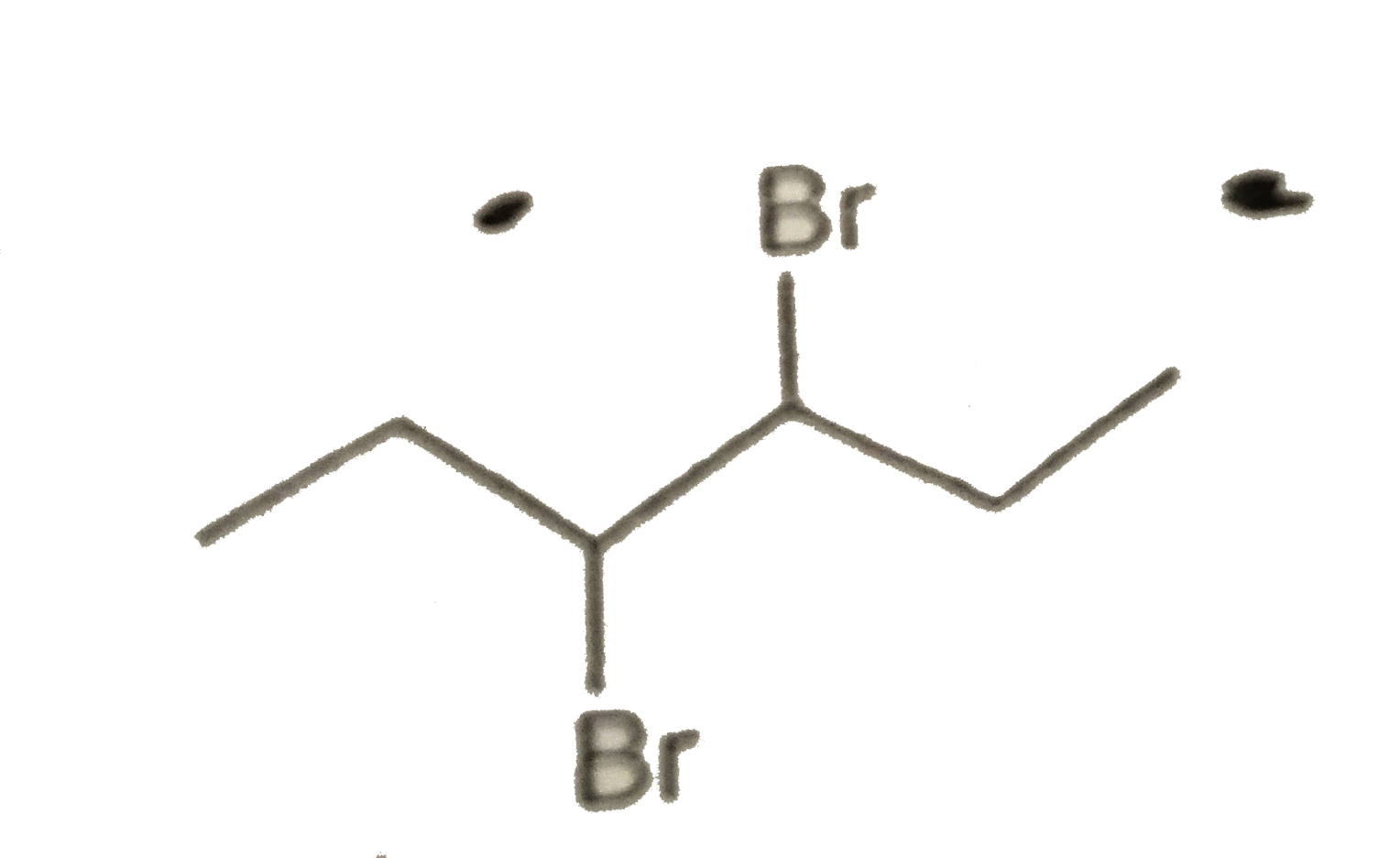The products formed when bromocyclohexane and sodium propynide are heated together are
1-cyclohexylpropyne
cyclohexene
propyne
2-cyclohexylpropyne
The correct Answer is:B, C
To determine the products formed when bromocyclohexane and sodium propynide are heated together, we can follow these steps:
Step 1: Identify the Reactants
- Bromocyclohexane: This is a cyclohexane ring with a bromine atom attached. The structure can be represented as C6H11Br.
- Sodium Propynide: This is the sodium salt of propyn-1-yne, represented as CH3C≡C⁻Na⁺. It contains a triple bond between two carbon atoms.
Step 2: Understand the Mechanism
- The reaction involves a nucleophilic substitution where the nucleophile (the carbon in sodium propynide) attacks the electrophilic carbon in bromocyclohexane. The bromine atom is a good leaving group due to its electronegativity.
Step 3: Nucleophilic Attack
- The negatively charged carbon (C⁻) from sodium propynide will attack the carbon atom in bromocyclohexane that is bonded to the bromine atom. This will lead to the displacement of the bromine atom.
Step 4: Formation of Products
- When the nucleophilic attack occurs, the bromine atom leaves as bromide ion (Br⁻), and a new bond is formed between the carbon of the sodium propynide and the carbon of the bromocyclohexane.
- The sodium ion (Na⁺) will combine with the bromide ion (Br⁻) to form sodium bromide (NaBr).
Step 5: Structure of the Product
- The resulting compound will be a substituted cyclohexane with a propynyl group attached. The structure can be represented as:
- 1-Propynylcyclohexane (where the propynyl group is attached to the cyclohexane ring).
Conclusion
- The final products of the reaction between bromocyclohexane and sodium propynide upon heating are:
- 1-Propynylcyclohexane
- Sodium bromide (NaBr)
Final Answer
The products formed when bromocyclohexane and sodium propynide are heated together are 1-Propynylcyclohexane and sodium bromide (NaBr).
---
- Bromocyclohexane: This is a cyclohexane ring with a bromine atom attached. The structure can be represented as C6H11Br.
- Sodium Propynide: This is the sodium salt of propyn-1-yne, represented as CH3C≡C⁻Na⁺. It contains a triple bond between two carbon atoms.
- The reaction involves a nucleophilic substitution where the nucleophile (the carbon in sodium propynide) attacks the electrophilic carbon in bromocyclohexane. The bromine atom is a good leaving group due to its electronegativity.
- The negatively charged carbon (C⁻) from sodium propynide will attack the carbon atom in bromocyclohexane that is bonded to the bromine atom. This will lead to the displacement of the bromine atom.
- When the nucleophilic attack occurs, the bromine atom leaves as bromide ion (Br⁻), and a new bond is formed between the carbon of the sodium propynide and the carbon of the bromocyclohexane.
- The sodium ion (Na⁺) will combine with the bromide ion (Br⁻) to form sodium bromide (NaBr).
- The resulting compound will be a substituted cyclohexane with a propynyl group attached. The structure can be represented as:
- 1-Propynylcyclohexane (where the propynyl group is attached to the cyclohexane ring).
- The final products of the reaction between bromocyclohexane and sodium propynide upon heating are:
- 1-Propynylcyclohexane
- Sodium bromide (NaBr)
The products formed when bromocyclohexane and sodium propynide are heated together are 1-Propynylcyclohexane and sodium bromide (NaBr).
Similar Questions
The product formed on heating calcium acetate is
View SolutionOf the following which is the product formed when cyclohexanone undergoes aldol condensation followed by heating?
View SolutionWhat will be the product formed when chlorobenzene is heated with sodium metal in the presence of dry ether?
View SolutionState the product formed during the reaction between sodium phenoxide and ethyl iodide on heating :
View SolutionName all the products formed when ammonia is passed over heated copper oxide.
View SolutionHow many elimination products are formed when the given dibromo compound is heated with 2 equivalent of sodium ethoxide in ethanol ?
 View Solution
View SolutionName the major product formed when sodium phenoxide is heated with CO2 at 400 Kunder 4-7 atm. pressure. What is the name of the reaction?
View SolutionThe product formed when acetone is heat with Ba(OH)2 is :
View SolutionWhat would be the product formed when
1-bromo-3-chlorocylobutane reacts with two equivalents of metallic sodium in water ?View SolutionWhen silver nitrate is heated, the product are
View Solution

